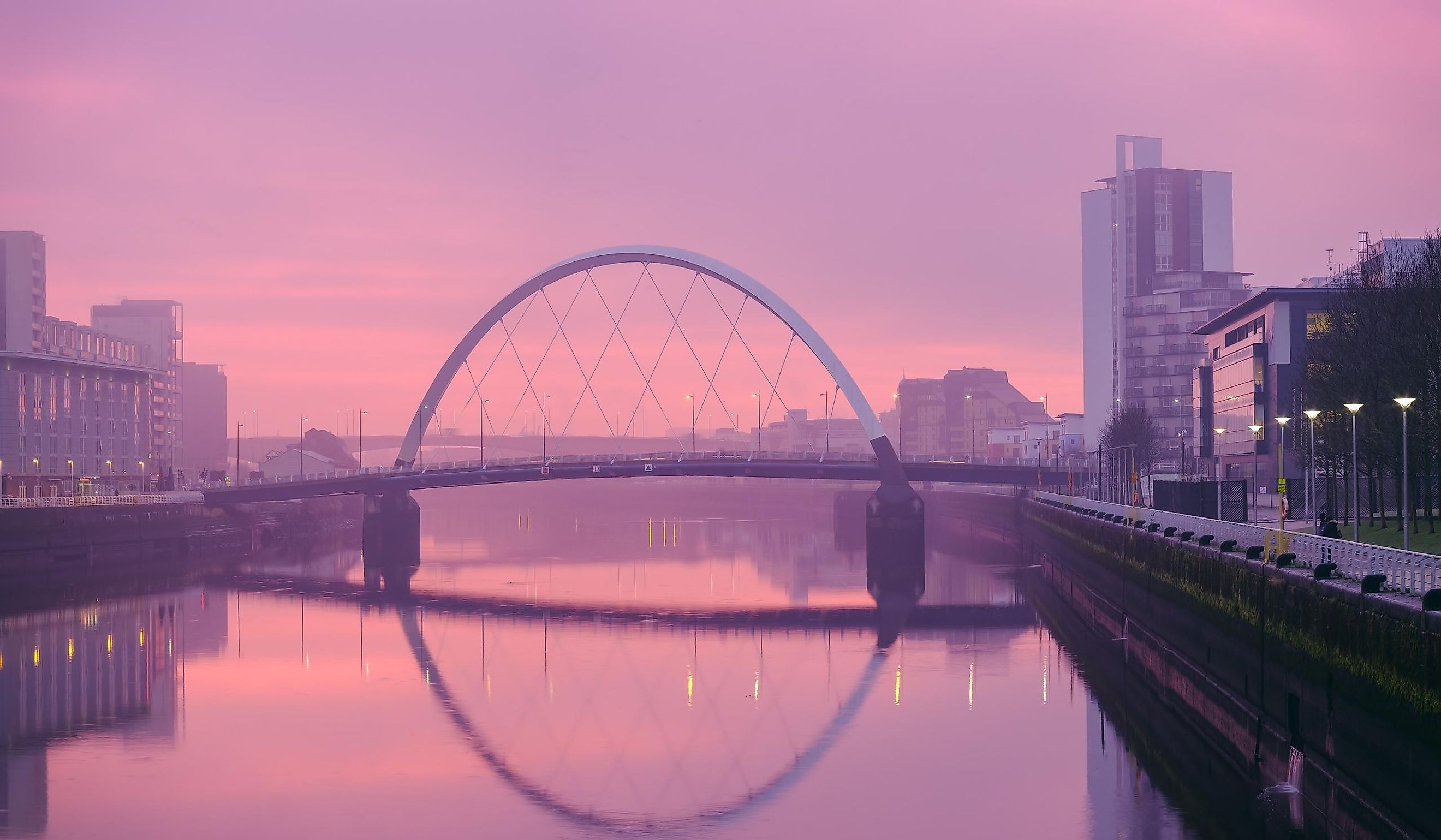
Clyde River
The Clyde River, or River Clyde, is a massive body of water that flows in the Firth of Clyde in Scotland. This stunning river is one of the most important in the country and flows for 170 kilometers before running into the Atlantic Ocean on the west. The Clydeside shipyards still form a border alongside the river and stretch over 20 miles below Glasgow.
Clyde River Course
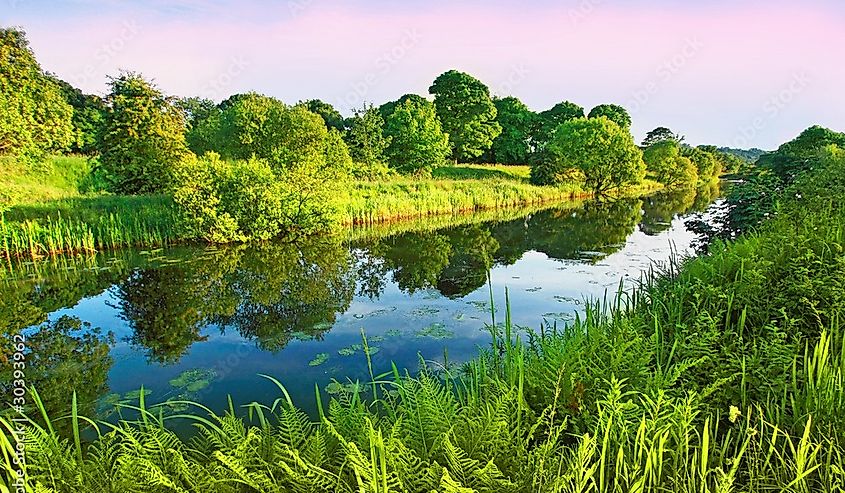
The Clyde River’s starting point is at the juncture of two streams: Dear Water and Potrail Water, in South Lanarkshire. At this intersection, the river flows northeast before continuing west into the southeast region of Glasgow. Here, it starts to widen and become wilder and more unpredictable.
The part of the river that runs through the center of Glasgow was widened by human hands and its flow straightened out after hundreds of years of industrial growth on the riverbanks. The waterway continues to flow west until it reaches the end of Glasgow and transforms itself into the Firth of Clyde before spilling over into the Atlantic Ocean.
The Firth of Clyde is also known as the mouth of the Clyde River and forms part of the deepest coastal waters of the British Isles, being 164 meters deep at the deepest point. The Firth of Clyde is home to around 40 islands and skerries, of which only 4 islands have inhabitants. The islands are Arran, Isle of Bute, Holy Isle, and Great Cumbrae.
Climate Of Clyde River Valley
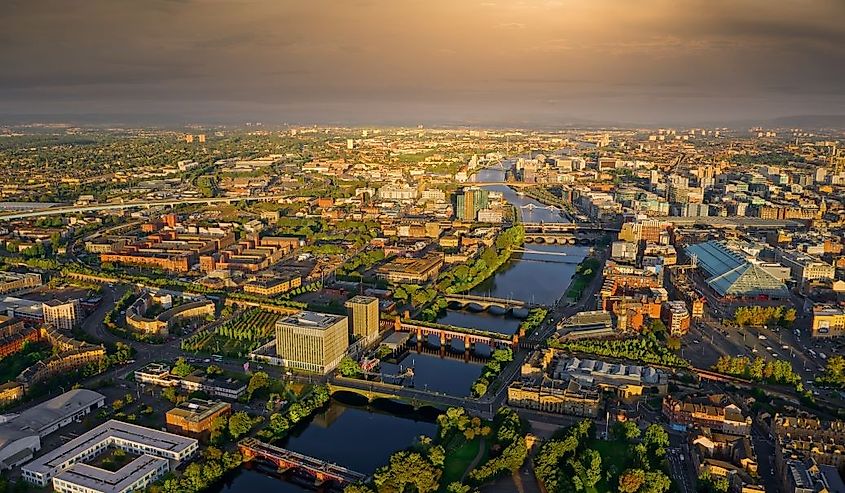
The Clyde River Valley sits on the banks of the River Clyde, and over the last few decades, the climate here has drastically shifted. Scientists have noticed a trend toward warmer and wetter weather and heavier rainfalls in winter. They have also warned that ongoing climate change will lead to drier summers by the middle of the century, which could have a devastating impact on communities’ water supply.
Experts believe that the average temperature along the River Clyde will increase by at least a couple of degrees by 2050. These climate changes will also have a notable impact on sea levels, with a predicted ocean rise of 70 cm by 2100.
History Of The Clyde River
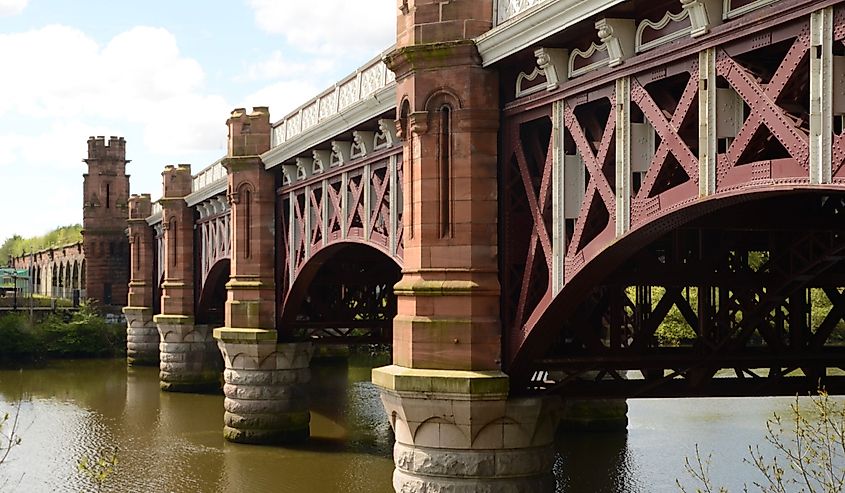
Historical evidence shows that people have inhabited the River Clyde’s banks for over 14,000 years, since the Palaeolithic era. To add to this evidence, researchers found several ancient canoes in the water, and on the banks there are still the remains of ancient structures.
Before the Romans arrived at the Clyde River, the Damnonii tribe, which preceded modern Glasgow, settled along the shores. The Damnonii people established the kingdom of Strathclyde in 500 B.C.E and welcomed the Romans with open arms when they finally arrived.
The Romans and the people of the Strathclyde kingdom exchanged knowledge and traded military information. Between them, they erected forts and built roads. During the 7th century, a Christian community settled on the site of Cathures. By 870 C.E., Norse-Irish raiders stormed and seized the capital of Strathclyde. The people of the kingdom had no fight left in them, and their stronghold was finally annexed in the 11th century by the kingdom of Alba.
Industry And The Clyde River
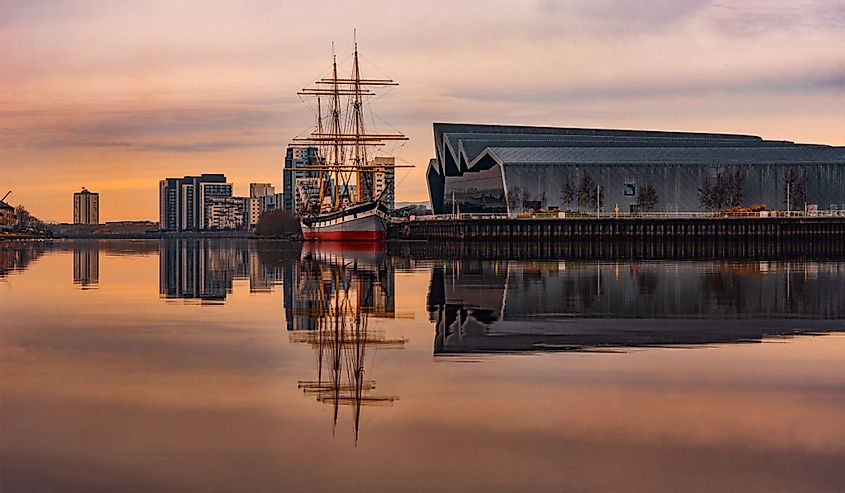
The River Clyde’s first bridge was constructed during the 13th century. As Glasgow expanded over the centuries, the University of Glasgow and the Archdiocese of Glasgow were established to much fanfare in the 15th century. The Clyde River was soon an important trade route between Glasgow and Europe and several trades thrived at the turn of the 18th century, including cotton and tobacco.
When the 19th century rolled around, they widened and deepened parts of the Clyde River to make it easier for boats to pass through. The steel industry that flourished in Glasgow resulted in a shift to shipbuilding on the riverbanks. Excellent, high-quality ships were built along the river—more than 25,000 in total.
With the Red Clydeside movement and the Second World War punctuating the 20th century for Glasgow, the shipyards were nearly destroyed by German forces. With plummeting sales and ship orders, the shipbuilding industry declined to the point where only two shipyards still stand on the River Clyde’s banks today.
Ecology Of The River Clyde

Today, the River Clyde sustains at least 17 seabird species and around 20,000 wildfowl. There are porpoises, otters, and seals in the water. The Clyde River even houses a basking shark or two! It is sadly true that centuries of heavy industrial activities left a devastating mark on the river and its riverbanks. Waste material and harmful chemicals still pollute the water, and the ongoing textile and electrical manufacturing industries are contributing to the still unsafe waters of the river.











